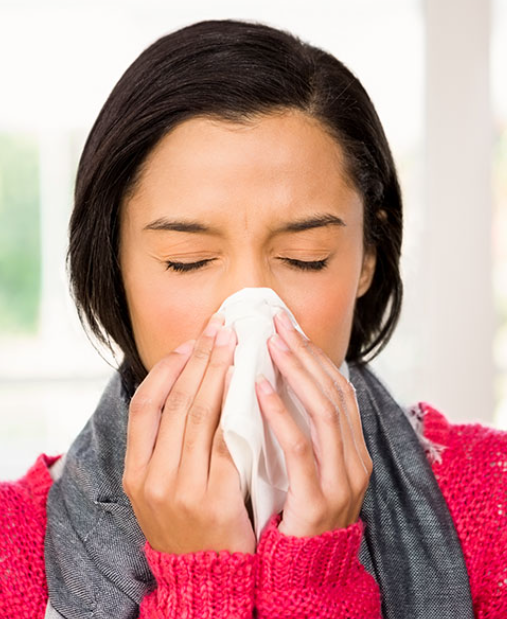
Common Cold
There’s a reason it’s called the common cold – because so many people catch it. Famously, there is no cure (yet), mainly because what you know as the cold is caused by an endless array of viruses. Just because you get a cold once doesn’t confer immunity against having another (and another).
You or your child can catch a cold from droplets in the air after someone coughs, sneezes, or talks, and by touching contaminated objects like toys, phones, towels, and utensils. If you touch a contaminated object and then touch your eyes, nose, or mouth, you are likely to catch a cold.
 Symptoms of a Cold
Symptoms of a Cold
The first symptoms of a cold are usually a sore throat and runny nose. Other symptoms can include:
- Coughing
- Sneezing
- Headaches
- Body aches
- Low-grade fever
- Congestion
- Generally feeling unwell (malaise)
The nasal discharge may be thicker than usual and may be green or yellow in color. (The color does not indicate a bacterial infection as was once thought.)
Colds develop one to three days after you or your child are exposed and you can expect it to last for a week to 10 days. If you smoke, symptoms may last longer. If you or your child do not improve after 10 days, see your primary healthcare provider.
When to See a Physician
Adults
An adult with a cold should see a primary healthcare provider or visit an urgent care facility if:
- You have a fever higher than 101.3F (38.5C).
- The fever lasts five or more days or returns after a fever-free period.
- You are wheezing.
- You have shortness of breath.
- You have a severe sore throat, headache, or sinus pain.
Children
While your child is not required to see a doctor for a cold, there are times when you should seek immediate medical assistance.
- The fever rises or lasts more than two days, regardless of the child’s age
- Symptoms worsen or fail to improve.
- Severe symptoms occur, such as headache or cough.
- Wheezing
- Ear pain
- Extreme fussiness
- Unusual drowsiness
- Lack of appetite
Who Is at Risk of Catching a Cold?
Anyone can catch a cold, but certain factors make it more likely.
- Age – children under the age of 6 tend to be at the highest risk of colds, especially if they spend time around other children.
- Weakened immune system – people with chronic illnesses or immune deficiencies are at higher risk of catching a cold.
- Time of year – colds are more common in winter when people are together in enclosed spaces, but you can get a cold any time of year.
- Smoking – if you smoke or are exposed to tobacco smoke, you are more likely to catch a cold and have more severe colds.
- Heightened exposure – if you spend time around lots of people, like on a plane or at school or work, you will be exposed to more viruses.
Complications from a Cold
For some, a cold can result in:
- Acute ear infection (otitis media) – caused by a bacteria or virus entering the space behind the eardrum, resulting in earaches and potentially green or yellow nasal discharge or return of a fever
- Asthma
- Acute sinusitis where sinuses become infected and inflamed
Other infections may be caught while children are sick with a cold, including strep throat, pneumonia, croup, or bronchitis. If this occurs, seek medical assistance as soon as possible.
Prevent the spread of the cold and other illnesses:
- Wash your hands frequently and thoroughly with soap and water.
- Clean your countertops with disinfectant, especially when someone is sick.
- Sneeze and cough into tissues and discard them immediately, then wash your hands.
- Don’t share dishes with other people when they are sick.
- Avoid people with colds.
- Eat a healthy diet, exercise, get plenty of sleep, and manage your stress.
Legacy ER & Urgent Care is always there for you.
Contact us with any questions or concerns.
